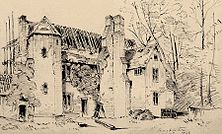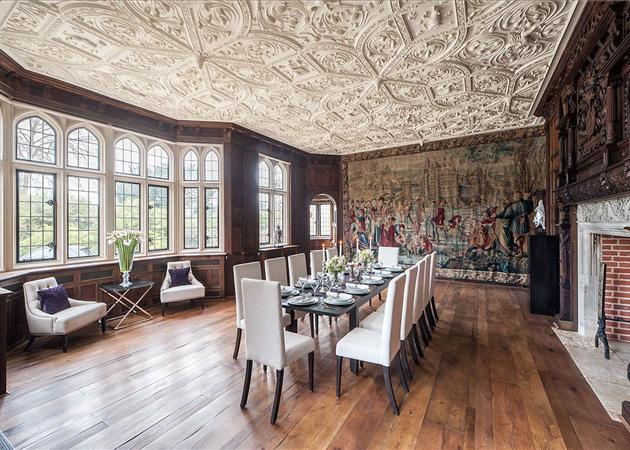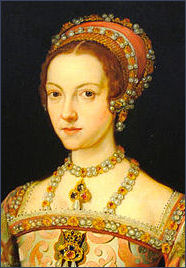
Picture taken in 1952 The Old Rectory formerly known as The Parsonage
The Old Rectory, Wimbledon’s s oldest surviving residence, was originally known as the Parsonage House. Once a moated Manor, it was built in the early 16th century, close to St Mary’s Church.
In 1536, after the dissolution of the monasteries, Parsonage House was handed to Thomas Cromwell by the King. However, after Cromwell’s death in 1540, the house was taken back, and three years later Henry gave it as a gift to Catherine Parr. In the months prior to his death, during a tour of his Surrey estates, the king was too ill to continue, so he stayed at the house for three days. Henry died in January 1547, and ownership of The Old Rectory was then transferred to the Dean and Chapter of Worcester Cathedral, who let out the house to successive lords of the manor. In 1550, the house became the country retreat of Sir William Cecil, later 1st Lord Burghley, senior adviser to Queen Elizabeth I.
A survey done in 1649 gives us a snapshot of its size. It had a dining hall, withdrawing room, parlour and private study, 10 chambers and five closets, five garrets (for servants), a kitchen, pantry, larder, meat room, buttery, beer and wine cellars, two dairy rooms, a brewhouse, bakehouse, washhouse, stables for 14 horses and a coal house. (info via The Independent.)

The Ruins of the Old Rectory c. 1860 by Charles Mileham
In 1550, the house became home to Sir William Cecil. Records show that by 1720, it was known as The Old Laundry House, presumably used for laundry for the new Cecil house, which was built next door in 1588.
It appears it remained uninhabited because by 1861, the house was a near ruin. Fortunately for us, it was rescued when it was sold as part of Wimbledon Park by Earl Spencer, to the developer, John Beaumont. Beaumont brought it back to life by repairing the exterior, refurbishing the rooms in Elizabethan style, and replanting the garden. He also planted a famous fig tree walk.

Interior of Dining Hall today
Subsequent owners have all added their own touches. In 1909 the house was purchased by marine engineer Matthias Jacobs, whose brother was an architect. Between them they added a billiard room, and a study extension to mask the chapel. In 1923, Thomas Lethaby purchased the house and he concentrated on embellishing the interior. The drawing room was re-fitted with oak paneling salvaged from the Chantry House, Newark. The elaborate plaster ceiling and grand fireplace were based on one at Knole House.
The house underwent several more changes of owner until it was bought by an Iraqi entrepreneur and philanthropist, Basil Faidhi. In 1992 Faidhi commissioned Wimbledon historian Richard Milward to write a history of the building entitled The Rectory – Wimbledon’s Oldest House.

The drawing room today
In 1994, Brian May, the astrophysicist, and lead guitarist of the rock band Queen, bought it.
Since then it has been sold again, reputedly for more than £26 million.
Links: Country Life
Tudor Wimbledon by R J Milward


